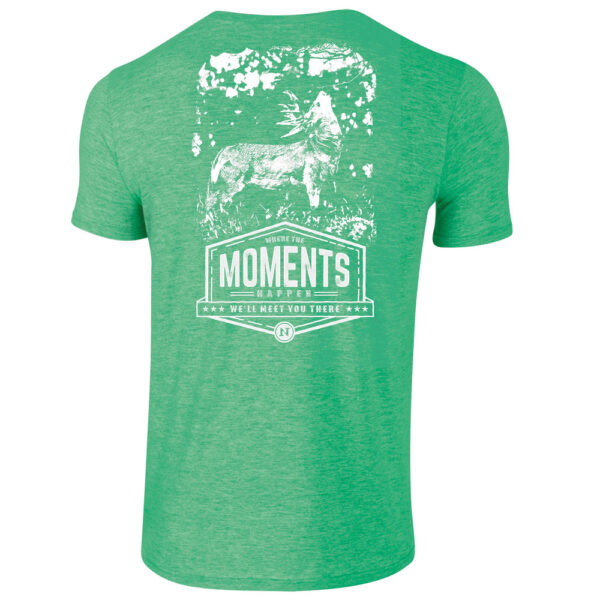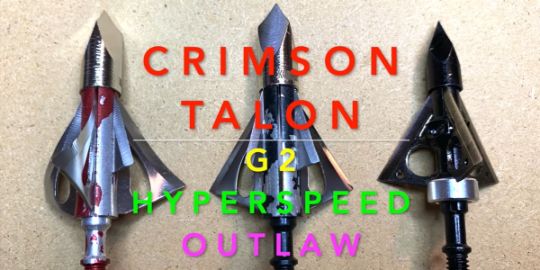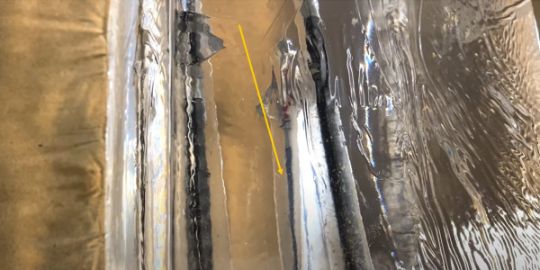In this broadheads review, I tested the Excalibur Bolt Cutter. It’s a broadhead that’s marketed for Excalibur crossbows, (originally made by Innerloc) but can also be used for vertical bows.
Bolt Cutter Broadheads Up Close
So, let’s check out some of the design features and specifications of the Bolt Cutter broadheads.
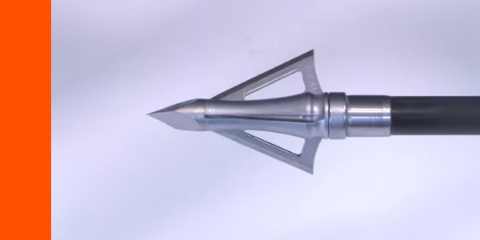
Here’s a good look at the Bolt Cutter close up. Now, the Bolt Cutter heads are designed for maximum flight and penetration and specifically marketed for crossbows, but can also be be used for vertical bows.
The Bolt Cutters are originally made by Innerloc and have a stainless steel tip.

The blades are stainless steel. The ferrule is aluminum and the blades have a cutting diameter of one and one-sixteenth inches. So a little bit smaller than most three-blade heads on the market.

The blades are also pretty thin. By my measurements, they’re 0.024 inches thick. So, these are some of the thinnest blades that I’ve ever tested, honestly. I’m interested to see how they perform.
They have a really good locking system for the blades.
The head unscrews and then you slide the blades out. So, it’s a really secure way of retaining the blades.

They have a cool flare to the back like that as well. So, I was eager to put these heads to the test and see how they perform.
For the following tests, I used my Bowtech SR6, set at 72 pounds, 27-inch draw. I used Bishop FOC King arrows for most of the shots and then for the really hard impact ones, I used the Bishop Fad Eliminators.
-

N1 Outdoors® Bareback Bowhunter™ Tee
Price range: $28.99 through $32.99 Select options This product has multiple variants. The options may be chosen on the product page -

Just Pass’N Through™ Tee featuring Iron Will (Various Colors)
Price range: $24.99 through $28.99 Select options This product has multiple variants. The options may be chosen on the product page -
Sale!
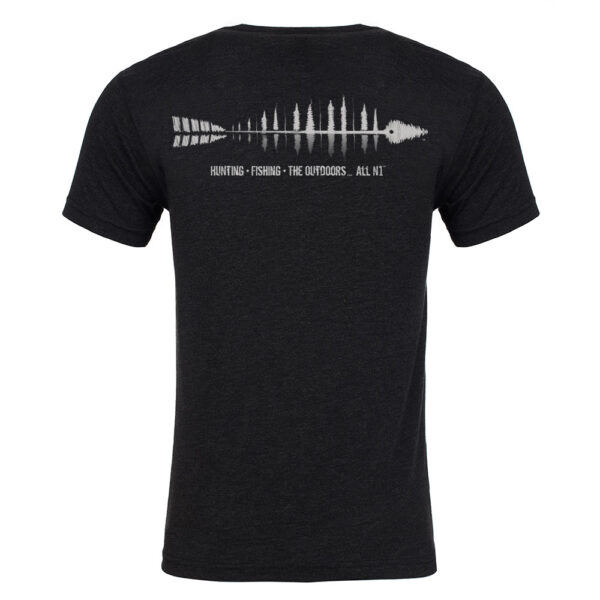
N1 Outdoors® Trifecta Fish Arrow Tee
Original price was: $22.99.$5.00Current price is: $5.00. Select options This product has multiple variants. The options may be chosen on the product page
Flight Forgiveness Test

I shot a field point, and then two broadheads (at 40 yards) to compare the flight of the Bolt Cutter heads.
Pre-Testing Sharpness

I tested the out-of-the box sharpness (the lower the number, the sharper the broadhead.)
Ballistic Gel And MDF Test
I shot the Bolt Cutter head into ballistic get that was fronted by foam padding and 1/2″ MDF.

It penetrated eight and three-quarter inches.
Post-Penetration Test Sharpness

After the first penetration test, I checked the sharpness again… 350.
-

N1 Outdoors® N-Tune™ Nock Tuning Reflective Arrow Wraps – Color Fade (Various)
Price range: $18.99 through $27.99 Select options This product has multiple variants. The options may be chosen on the product page -
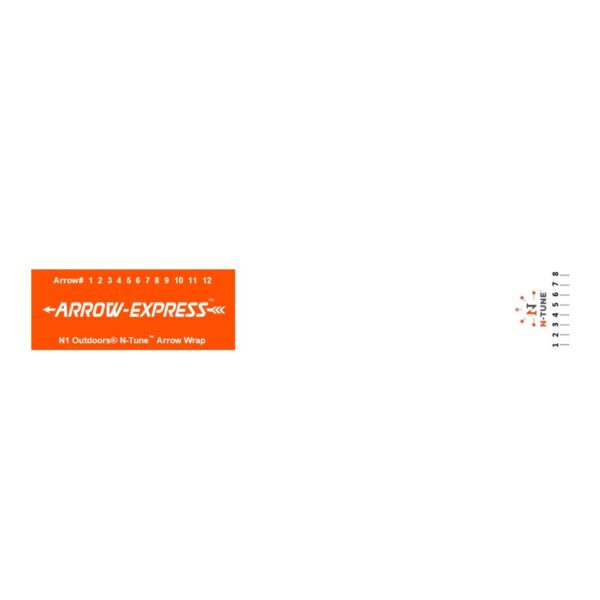
N1 Outdoors® N-Tune™ Nock Tuning Reflective Arrow Wraps – Arrow Express™
Price range: $18.99 through $27.99 Select options This product has multiple variants. The options may be chosen on the product page -

N1 Outdoors® N-Tune™ Nock Tuning Reflective Arrow Wraps – Speed Spear™
Price range: $18.99 through $27.99 Select options This product has multiple variants. The options may be chosen on the product page
More awesome wraps for your arrows HERE!
Layered Cardboard Penetration Test

The Bolt Cutter penetrated through 67 layers of layered cardboard.
MDF Test

The head was in perfect condition after shooting it 3 times into 1/2″ MDF.
Steel Plate Test

I shot the Bolt Cutters through a .22 gauge steel plate to see how they would hold up, and you can see it’s basically the round hole with three slits coming out of that style rather than a triangular punch, like some heads have.

And here it is after the three shots through the MDF and the two, three of the steel plate and you can see with the steel plate the tip got a little bit blunted and the blades got pretty nicked up there but otherwise held together fine and here are the holes in the steel plate.
Cinder Block Test

Here’s the Bolt Cutter after going through the MDF and the steel plate and then embedding into the concrete block that I shot it into. It stuck really deeply into the concrete. I think that’s the deepest that any broadhead has ever stuck into it.

It remained very much intact and the tip was still really pointy. The blades got a bit banged up with the steel but not that bad. But man, it did extremely well through the concrete.
-

N1 Outdoors® CAMP. Leather Patch Trucker Hat
$29.99 Select options This product has multiple variants. The options may be chosen on the product page -
Sale!

N1 Outdoors® Fleece Logo Beanie
Original price was: $17.99.$9.99Current price is: $9.99. Select options This product has multiple variants. The options may be chosen on the product page -
Sale!

N1 Outdoors® Leather Patch Trapper Hat (Arrowhead – various patterns)
Original price was: $29.99.$9.00Current price is: $9.00. Select options This product has multiple variants. The options may be chosen on the product page
Final Thoughts On The Excalibur Bolt Cutter Broadheads
So what do you think of the Bolt Cutter broadheads?
Hey, you know what, it has some real strengths! I mean the flight and the penetration alone, those are two really great strengths of this broadhead.
So check out the scoresheet below!



























